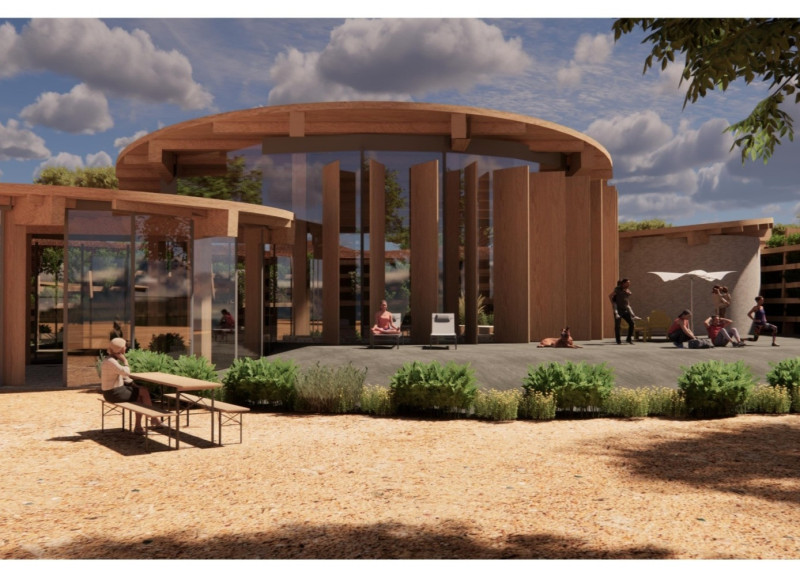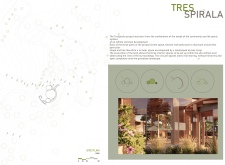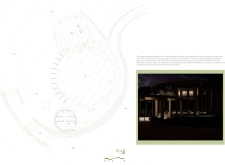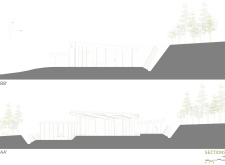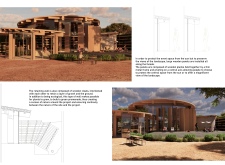5 key facts about this project
The TreSpirala project brings together community needs and environmental awareness in a setting that encourages interaction and connection. Located in a picturesque landscape, the design includes three main areas: an event space, a kitchen, and a bathroom. The core concept revolves around a spiral shape, symbolizing continuous development and unity among users. This shape allows for an inviting and practical environment for various social activities.
Design Integration
The foundation of the design is based on a careful excavation that accommodates the interior spaces without blocking surrounding views. This strategy helps integrate the circular forms with the natural environment, making the transition between built and natural spaces smooth. Landscaped ramps promote accessibility, encouraging movement and interaction as people approach the building.
Materials and Sustainability
Sustainability is a key focus of the project, evident in the use of locally sourced timber. This choice reduces transportation impacts and supports local economies. Timber construction also allows for large bay windows that let in ample natural light, enhancing the connection between the interior spaces and the external landscape. The lightness of the timber contributes to a friendly and open atmosphere.
Ecological Features
The retaining wall, made with interlocking wooden cleats, supports gravel and soil while promoting plant growth. This design creates a green boundary that enriches the surrounding area and helps foster biodiversity. The wall serves not only a structural purpose but also enhances the visual connection between the building and nature, providing a more engaging experience for visitors.
Adaptive Sun Control
Large wooden panels are used along the facade to manage sunlight and maintain views of the landscape. These panels pivot on a central axis, allowing users to adjust the light levels according to their preferences. This flexibility increases the functionality of the central event space, adapting throughout the day and maintaining an open and inviting feel.
The TreSpirala project stands out for its ability to connect people with their environment. It encourages community interaction while respecting its natural surroundings, creating a space where both people and nature can thrive in harmony.


